Venetian Wonders: From Dolomites to Innsbruck
Join our free walking tour as we explore the enchanting sights of Venice, followed by breathtaking views in the Dolomites and the charm of Innsbruck.
Time
3 Hours
Stops
9 Places
Distance
3.6 km
Piazza San Marco (St. Mark's Square)
The heart of Venice, St. Mark's Square is a magnificent open space surrounded by historic architecture and is an ideal starting point to appreciate the grandeur of Venice.
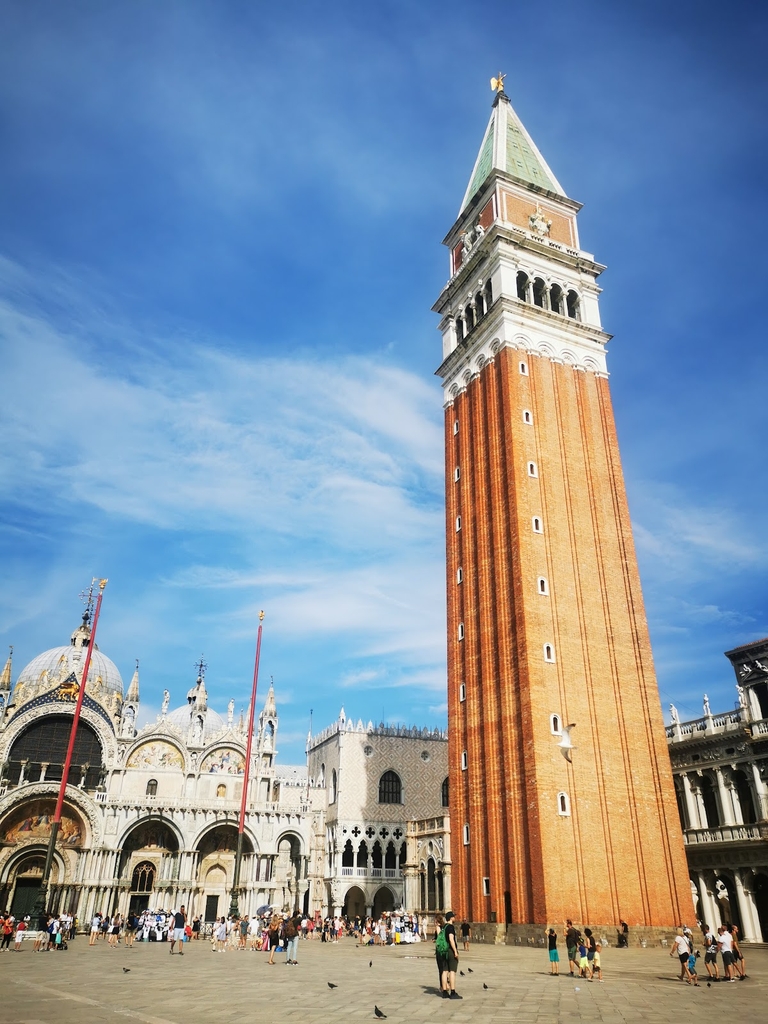
Piazza San Marco (St. Mark's Square) (Source: Google Maps)
Piazza San Marco, or St. Mark's Square, is the principal public square of Venice and is often referred to as the 'drawing room of Europe.' Surrounded by stunning architecture, including the Basilica di San Marco and the Doge's Palace, this square has been the city's social, political, and religious center for centuries. Its iconic campanile, or bell tower, stands tall at 98.6 meters and offers spectacular views of the city. The square is also known for its lively atmosphere, with numerous cafes and shops, and hosts various events and festivals throughout the year. The history of Piazza San Marco dates back to the 9th century, and it has been a vital part of Venice's identity, attracting visitors from all over the world who come to admire its beauty and significance.
Basilica di San Marco (St. Mark's Basilica)
Located on St. Mark's Square, this iconic cathedral is renowned for its stunning Byzantine architecture and intricate mosaics.
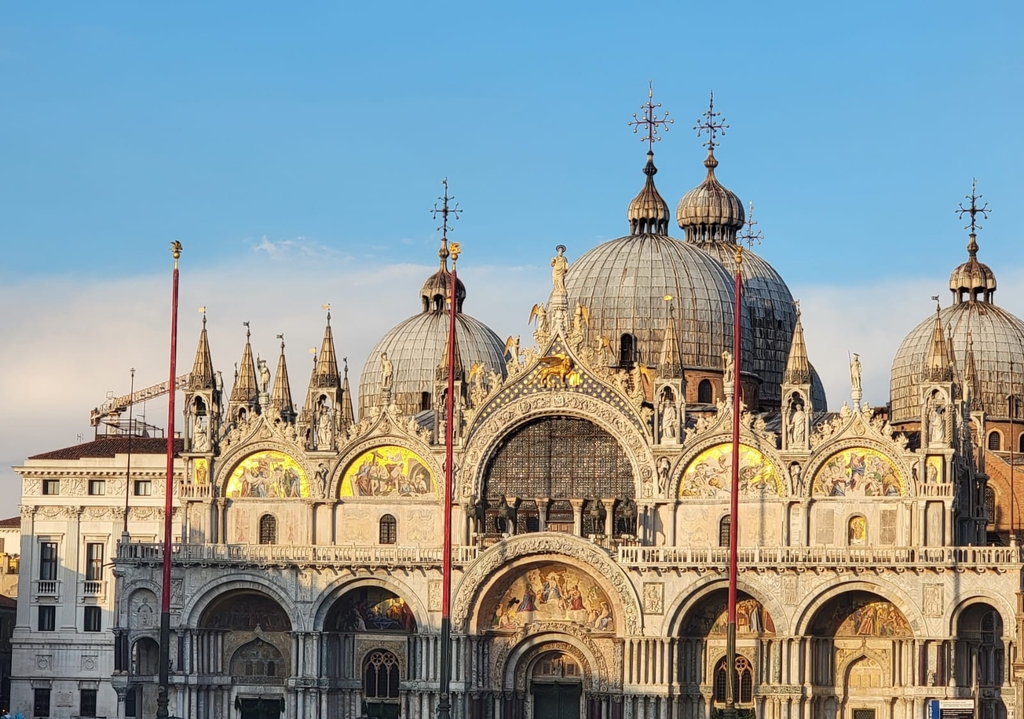
Basilica di San Marco (St. Mark's Basilica) (Source: Google Maps)
Basilica di San Marco, or St. Mark's Basilica, is an architectural masterpiece located in the heart of Venice. Constructed in the 11th century, this cathedral is famed for its stunning Byzantine architecture, featuring intricate mosaics that depict biblical scenes and the life of St. Mark, the patron saint of Venice. The basilica's façade is adorned with opulent decorations, including golden mosaics and impressive sculptures. The interior is equally breathtaking, with its high domes and lavish use of gold, creating a celestial atmosphere. The basilica also houses the relics of St. Mark, which were brought to Venice from Alexandria in the 9th century. As a symbol of Venice's wealth and power during the Middle Ages, the basilica has played a crucial role in the city's religious and cultural life, making it a must-visit for anyone exploring Venice.
Campanile di San Marco (St. Mark's Campanile)
Offering panoramic views of Venice, the Campanile is a must-visit for those wanting a bird's-eye perspective of the city.
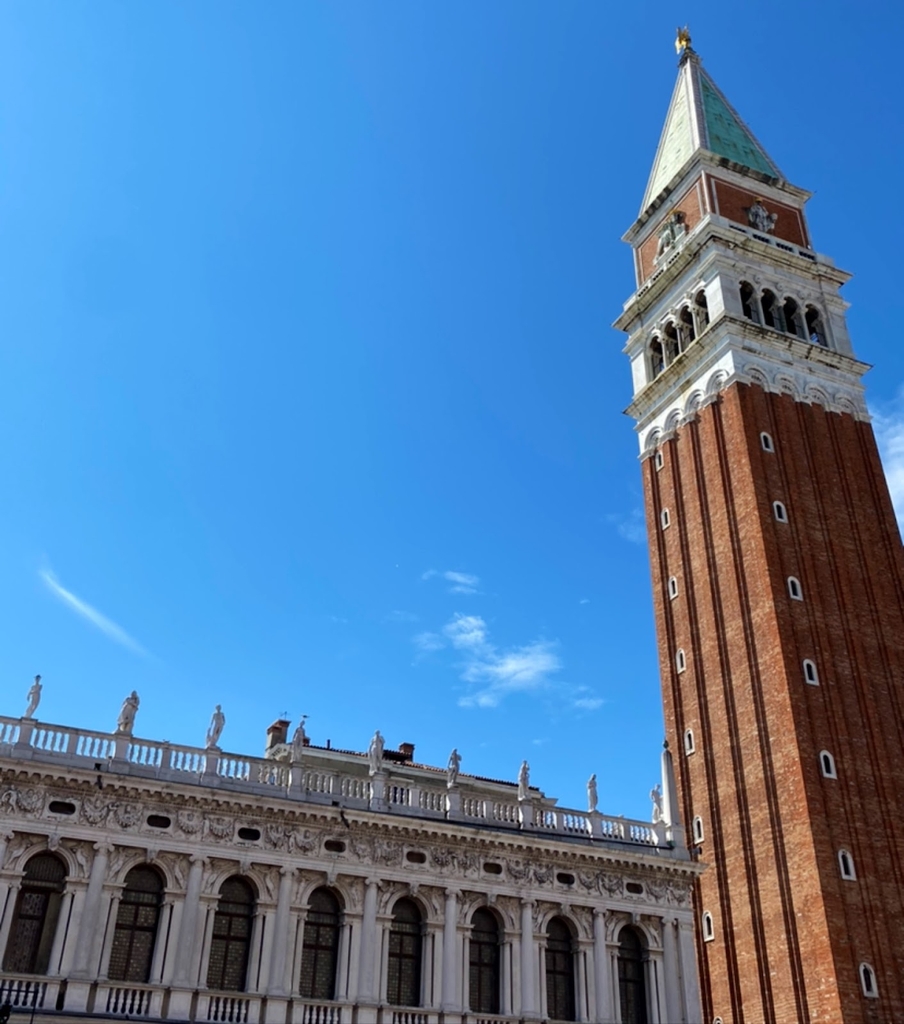
Campanile di San Marco (St. Mark's Campanile) (Source: Google Maps)
The Campanile di San Marco, or St. Mark's Campanile, is an iconic bell tower that dominates the skyline of Venice. Originally built in the 9th century as a lighthouse, it has undergone several reconstructions, with the current structure completed in 1912. Standing at 98.6 meters tall, the campanile offers panoramic views of Venice and its surrounding lagoon, making it a popular spot for tourists. Visitors can ascend to the top via an elevator or climb the stairs to enjoy breathtaking vistas of the city, including landmarks like the Grand Canal and the Rialto Bridge. The campanile is also home to a famous bronze statue known as the 'Moors,' which strikes the bell on the hour. As a symbol of Venice's rich history and architectural prowess, the Campanile di San Marco is an essential stop for anyone visiting the city.
Bridge of Sighs
Connecting the Doge's Palace to the prisons, the Bridge of Sighs is one of the most photographed landmarks in Venice.
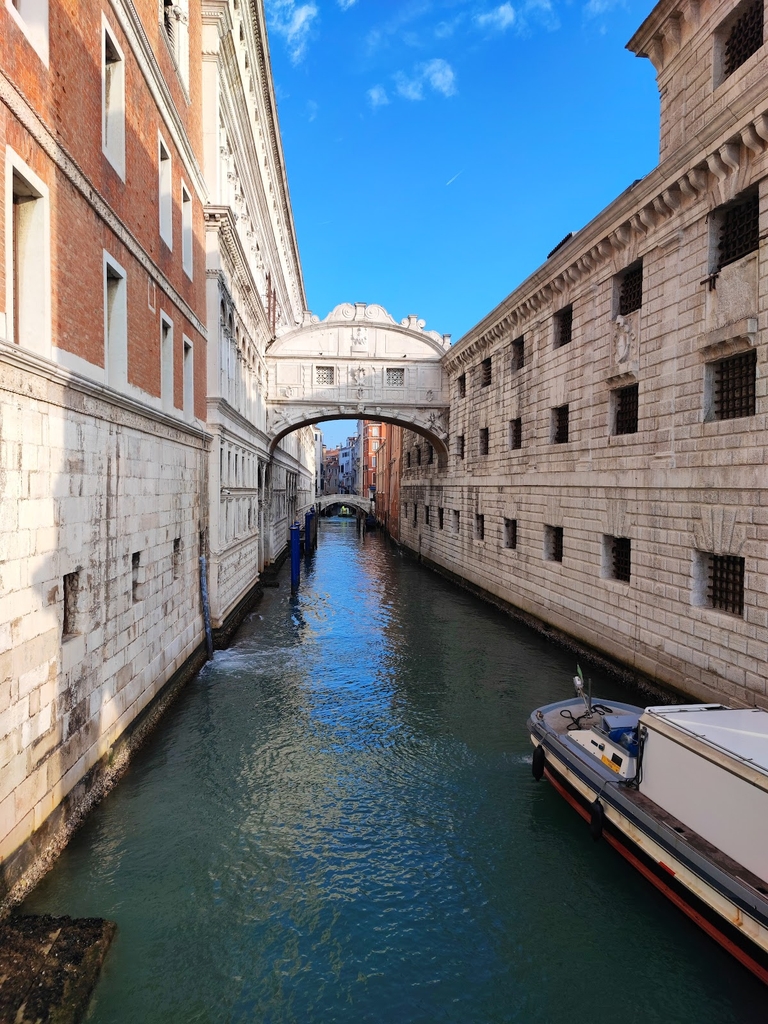
Bridge of Sighs (Source: Google Maps)
The Bridge of Sighs is one of the most famous landmarks in Venice, connecting the Doge's Palace to the prisons. Built in the early 17th century, this enclosed bridge is constructed of white limestone and features beautiful Baroque architecture. Its name is derived from the sighs of prisoners who would cross the bridge on their way to incarceration, catching a final glimpse of the outside world through its small windows. The bridge has become a symbol of Venice's darker history, as it reflects the city's past of political intrigue and imprisonment. Today, it is a popular spot for tourists and photographers, who are drawn to its romantic and melancholic allure. The Bridge of Sighs is not only an architectural marvel but also a poignant reminder of Venice's complex history.
Doge's Palace
Just a short walk from St. Mark's Basilica, the Doge's Palace is a masterpiece of Gothic architecture and a symbol of the political history of Venice.
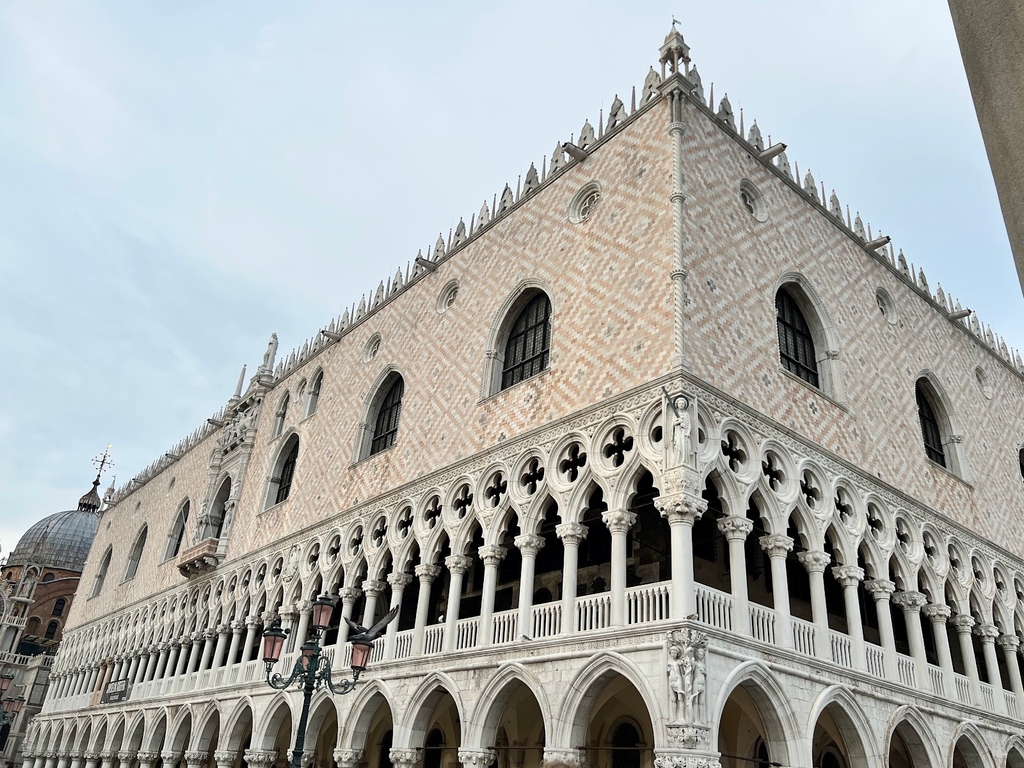
Doge's Palace (Source: Google Maps)
The Doge's Palace, or Palazzo Ducale, is a stunning Gothic palace that was the residence of the Doge of Venice, the city's chief magistrate, and the seat of the Venetian government. Constructed in the 14th century, the palace is renowned for its intricate architecture, featuring a blend of Byzantine, Gothic, and Renaissance styles. The façade is adorned with beautiful white and pink Istrian stone, and the interior boasts lavish rooms decorated with works of art by famous artists such as Titian and Tintoretto. The palace also houses the famous Hall of the Great Council, which was the largest room in Europe at the time of its construction. Visitors can explore the palace's rich history, including the secretive chambers used for political meetings and the notorious prison cells. The Doge's Palace is an iconic symbol of Venice's power and influence during its golden age, making it a must-see for those interested in the city's history.
Riva degli Schiavoni
A lively promenade along the waterfront, perfect for a leisurely stroll and enjoying views of the Venetian Lagoon.
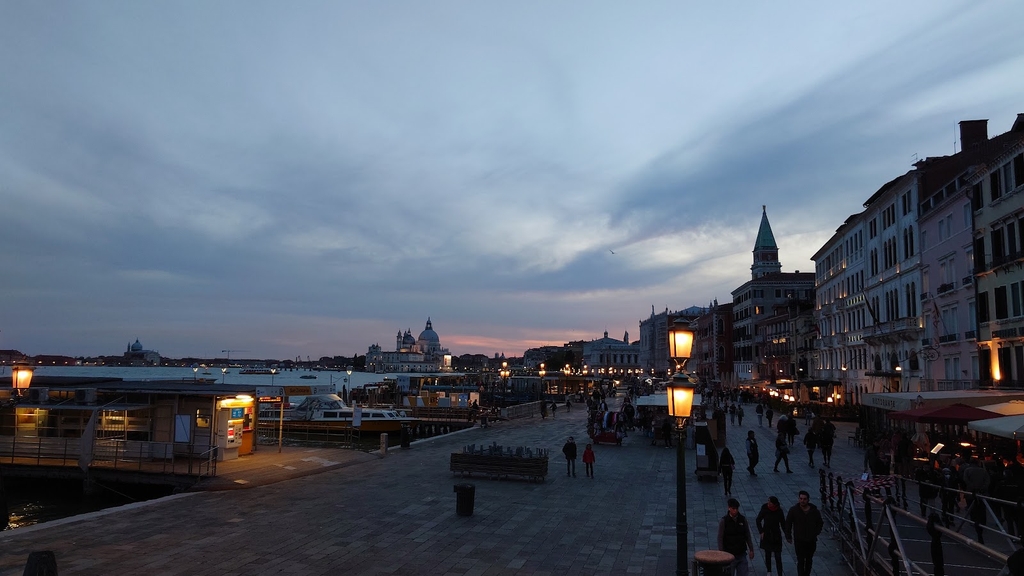
Riva degli Schiavoni (Source: Google Maps)
Riva degli Schiavoni is a picturesque waterfront promenade that runs along the eastern shore of Venice, offering stunning views of the Venetian Lagoon and the islands beyond. This lively promenade is lined with cafes, shops, and historic buildings, making it a popular spot for both locals and tourists. The name 'Riva degli Schiavoni' refers to the 'Slavs' who once inhabited the area and were known for their shipbuilding skills. Today, the promenade serves as a bustling thoroughfare for visitors arriving by water transport. It is also a prime location for enjoying the vibrant atmosphere of Venice, with street performers, artists, and vendors adding to its charm. The Riva is especially enchanting at sunset when the golden light reflects off the water, creating a magical ambiance that captures the essence of Venice.
Campo Santa Maria Formosa
This picturesque square is surrounded by beautiful buildings and offers a more tranquil glimpse into Venetian life.
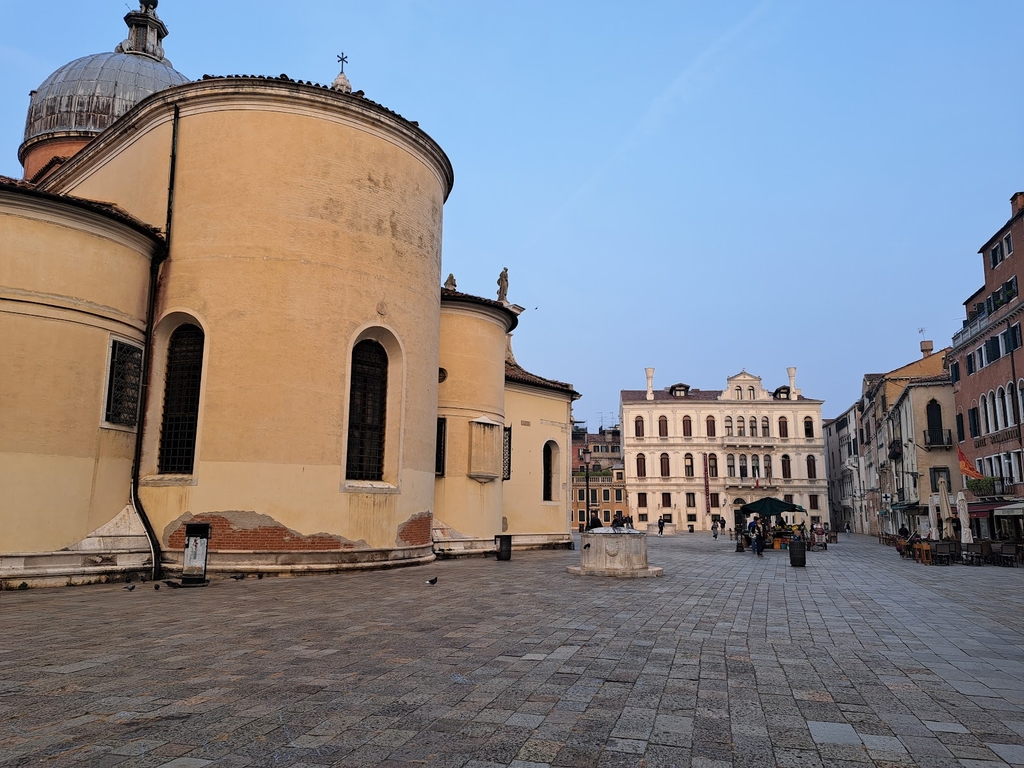
Campo Santa Maria Formosa (Source: Google Maps)
Campo Santa Maria Formosa is a charming square located in the heart of Venice, known for its picturesque setting and beautiful architecture. Surrounded by historic buildings, the square offers a peaceful escape from the bustling streets of the city. The name 'Santa Maria Formosa' refers to the church that stands at one end of the square, which dates back to the 15th century and is renowned for its stunning Baroque interior. The square has been a gathering place for Venetians for centuries, hosting various events and celebrations. Its tranquil atmosphere is perfect for enjoying a coffee at one of the nearby cafes while soaking in the beauty of the surroundings. Campo Santa Maria Formosa is a lesser-known gem in Venice, providing visitors with a glimpse into the everyday life of the city's residents.
Basilica di Santa Maria dei Frari
Known for its stunning interior and works of art, this church is a hidden gem in the San Polo district.
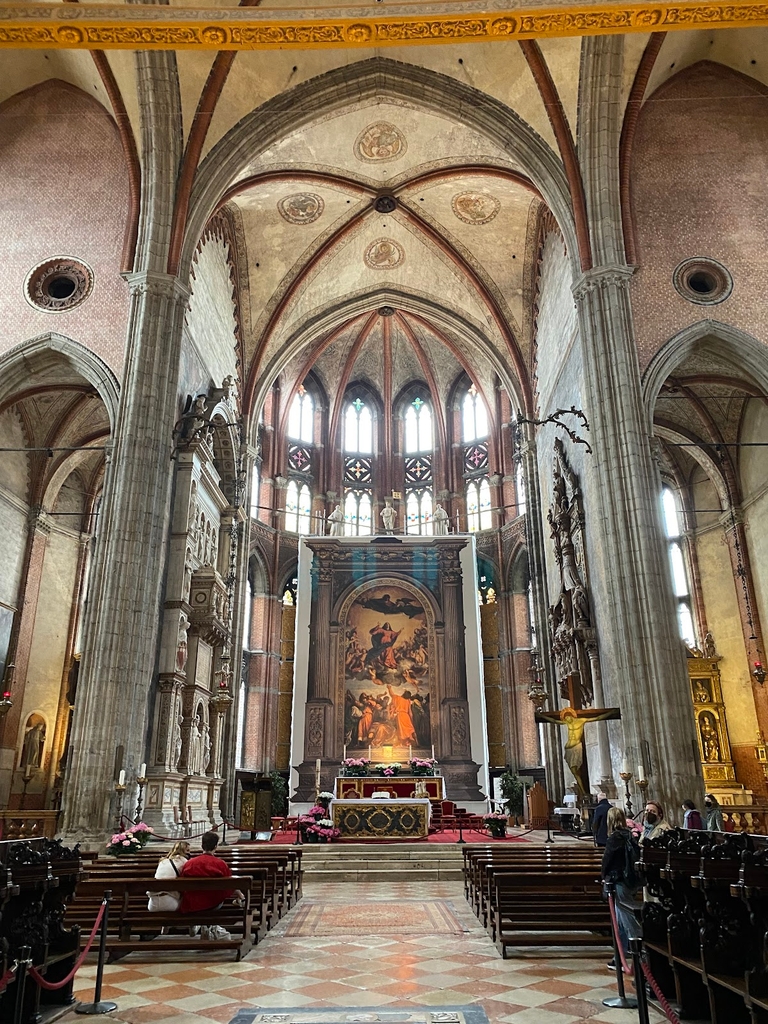
Basilica di Santa Maria dei Frari (Source: Google Maps)
Basilica di Santa Maria dei Frari, located in the San Polo district of Venice, is a stunning Gothic church known for its impressive architecture and exceptional artwork. Completed in the 14th century, the basilica features a striking façade and a beautiful interior adorned with masterpieces by renowned artists such as Titian and Bellini. The church is home to several important artworks, including Titian's famous Assumption of the Virgin, which dominates the high altar and is considered one of the masterpieces of the Venetian Renaissance. The basilica's tranquil atmosphere and magnificent art make it a hidden gem in the city, attracting art lovers and history enthusiasts alike. Visitors can explore the church's chapels, each displaying remarkable sculptures and paintings, and appreciate the serene beauty of this spiritual space. Basilica di Santa Maria dei Frari is a must-visit for those seeking to experience the artistic heritage of Venice.
Rialto Bridge
One of the oldest bridges spanning the Grand Canal, the Rialto Bridge is an architectural and cultural icon of Venice.
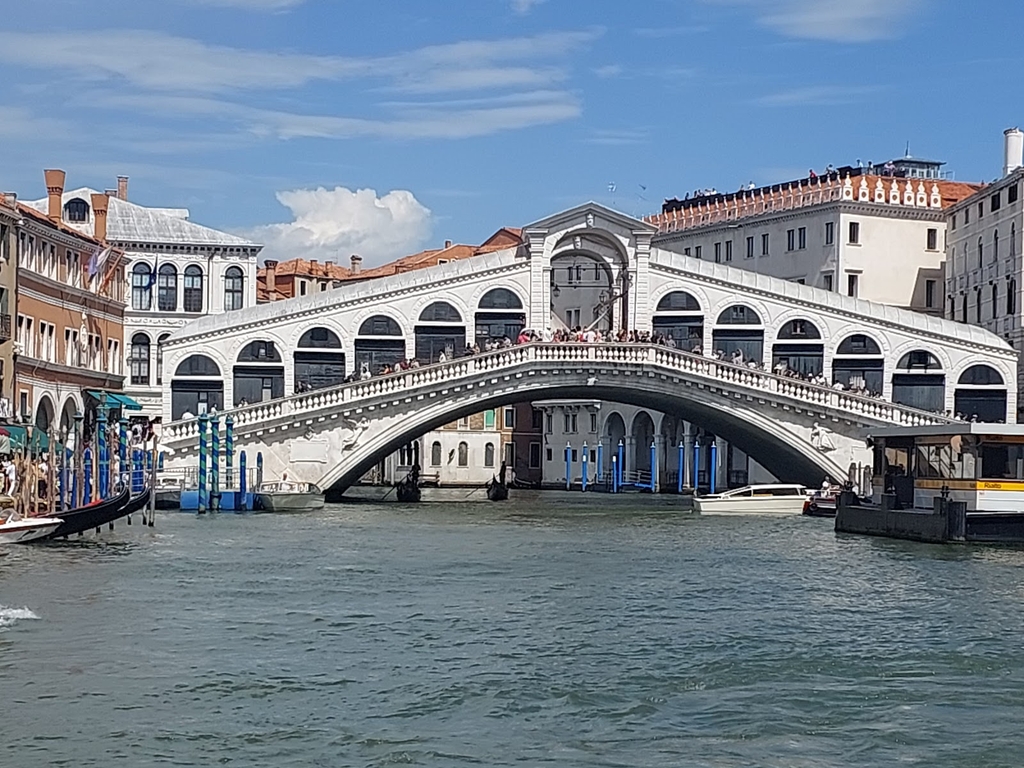
Rialto Bridge (Source: Google Maps)
Rialto Bridge is one of the most iconic symbols of Venice, spanning the Grand Canal and connecting the districts of San Marco and San Polo. Completed in the 16th century, the bridge is an architectural marvel, featuring a distinctive design with a single arch and two inclined ramps leading to the central walkway. It was originally constructed as a wooden bridge but was later replaced with the current stone structure to accommodate increasing traffic and trade. The Rialto Bridge has long been a bustling marketplace, with shops lining both sides, offering everything from souvenirs to local delicacies. As one of the oldest bridges in Venice, it serves as a vital link for both locals and visitors, providing breathtaking views of the Grand Canal and the surrounding architecture. The Rialto Bridge is not just a functional crossing; it is a cultural icon that embodies the spirit of Venice.

Your travels, your rules.
Create your own Free Walking Tours.
Set your preferences, distances and anything you want to do or see.
Completely free, no payment required.